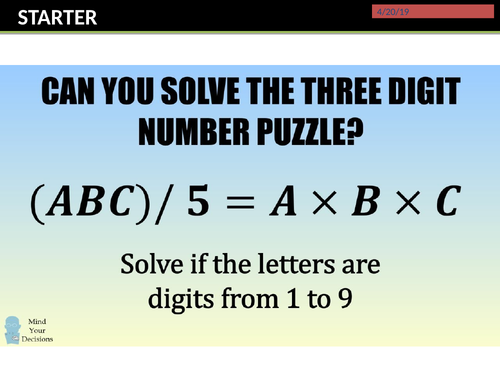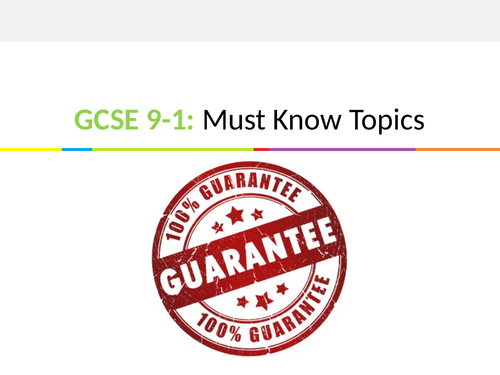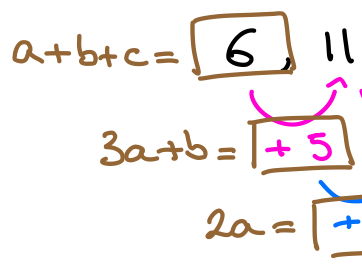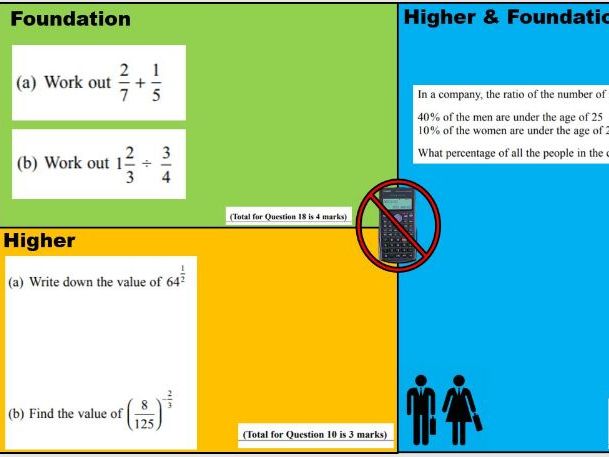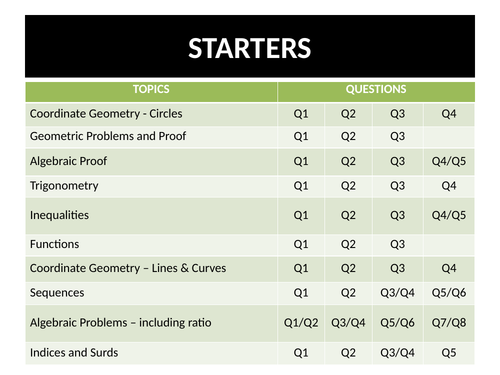
43Uploads
19k+Views
8k+Downloads
Mathematics

IB Maths Applications and Interpretations SL - Measures of Dispersion
PowerPoint lesson on Measures of Dispersion.

Angry Birds: Quadratics Project
Here is a great activity to do as a group, pairs or individually. I haven’t created it but wanted to share it with others. This activity looks at quadratics given in different forms; table of values, graphically, in words, and in standard form. The idea is to see which birds hit the pigs. There are 5 versions of this activity which is great. Students don’t need to know about vertex form (completing the square) for this activity, but do need to understand that the axis of symmetry is half way between the roots.

Time Series Assignment
Here is a short independent task looking at time series of population over time. It also creates discussion for curves of best fit.

IB Maths Analysis and Approaches SL: Quadratic Inequalities
I used this lesson before going into the quadratic formula and the discriminant.

GCSE 9-1 Maths Digit Proofs
For those higher achieving students looking to get a grade 9. As proofs is new to the Edexcel specification, digit proofs is not common but has shown up on a Mock Exam.

GCSE 9-1 Maths Must Know Topics
Lesson 1: Quadratic Sequences
Lesson 2: Completing the Square
Lesson 3: Iteration
Lesson 4: Composite Functions
Each lesson includes worked examples and practice questions. Alternative methods are shown for completing the square. Iteration lesson includes a video and graphical representation of how iteration works to deepen student understanding.

Bungee Barbie - Scatter Graphs and Line of Best Fit
This activity requires students to gather data to construct a scatter graph. After students have constructed the scatter graph they then have to find the equation of the line of best fit and use that to make a prediction of how many bands are needed for the bungee jump. Calculations will be off which lead to the discussion of interpolation and extrapolation and why maths in the real world does not always match up with theoretical predictions.
The PowerPoint comes with a worksheet that students will use to fill in. I have also attached an egg version. The activity will take at least 2 days. One day to gather their information and the second to test their predictions.

Quadratic Sequences - Complete Lesson
The lesson looks at the differences between a linear and quadratic sequences graphically and focusing on finite differences, thus leading to the nth term. The lesson identifies two methods for finding the nth term of a quadratic sequence with multiple questions in different contexts. Questions also have students transferring skills from other topics such as area, solving equations, simultaneous equations, etc.
This lesson can also be used with AQA Further Maths students as the PowerPoint ens with limiting value of a sequence.

IB Maths Applications and Interpretation SL: Financial Mathematics
The following contains 4 PowerPoints covering the following topics:
Simple Interest
Compound Interest
Inflation
Depreciation
Loans
Annuities
Amortization
Each PowerPoint contains worked examples, student exercises and Past Exam questions. There are also links throughout to various YouTube explanations (eg. difference between simple interest and compound interest, what is amortization?, etc.), How to use the GDC examples, Desmos, and Geogebra interactives.

Higher GCSE Maths Starters (Target 5 - 9)
Th bundle contains 32 days worth of starters. Each stater comprises of 2 questions. One being of level 4 or 5 and the other of level 7 to 9. The idea is that students will practice both questions from the beginning and ending of the exam. I find higher level students tend to make mistakes early of in the exam and this allows them to practice these types of questions in class. Thus helping to improve results.

Trigonometry - Tree Measuring
The following activity will allow students to use their knowledge on trigonometry along with applications on their phone and computer to estimate the height of the tree. The students will use 3 different methods to measure the height of a tree and at the end will comment on which method is the most accurate assuming the last method is the closest estimate.
Students really enjoyed going outside and applying their skills to this task. This activity is a great investigation for those looking to move in the the IB BP program.

GCSE 9-1 Maths Starters (Target Grades 4-6)
20 Maths starters for targeting grades 4 - 6 on a Higher Paper. Also works well if teaching a boarder line class with a few students writing the Foundation Exam. Most starters have complete solutions. Questions are taken from various Edexcel Exam papers and contains questions from levels 4 - 9. Certain higher level questions are given for students to transfer their skills and obtain some of the marks.

IB Maths AI: Voronoi Diagrams
This complete lessons contains Desmos and GeoGebra interactives to demonstrate how to create voronoi diagrams, as well as examples. The lesson starts off with a review on finding equations of perpendicular bisectors then moves into a explorative task about voronoi diagrams. The lessons covers the following topics:
equation of a perpendicular bisector
how to construct a perpendicular bisector
key terminology used when constructing voronoi diagrams
how to construct a voronoi diagram with multiple sites
finidng centre of a circle using perpendicular bisectors of cords
finding locations of missing sites
nearest neighbour
adding new sites to a voronoi diagram
toxic waste dump problems (largest circle)
At the end this is a multiple choice quiz. There are also embedded link to Desmos Classroom activities. As well, throughout the PowerPoint there are worked examples and exercises and past paper exam questions for students to complete.

IB analysis and approaches SL - Chapter 1 - Sequences and Series
This PowerPoint follows the entire content for Chapter 1 of the Oxford textbook. PowerPoints have worked examples as well as extra practice questions for students to do in class. I have pulled together questions and examples from various resources. Each PowerPoint as contains past IB exam questions for students to get familiar with the style of questioning. Content covered through the PowerPoints include:
arithmetic sequences and series
geometric sequences and series
sigma notation
compound interest
binomial theorem
proofs

IB Maths Applications and Interpretation SL: Chapter 4 - Dividing Up Space
The PowerPoint follows chapter 4 from the Oxford textbook. There are worked examples, student exercises and past paper exam questions for each section. I have also embedded links to various Youtube, GeoGebra and Desmos activities and visuals to help improve student understanding. The PowerPoint contains the following content:
recap piecewise functions
the number plane
distance between 2 points (2D & 3D)
midpoint (2D & 3D)
classifying triangles given coordinates
coordinate geometry in 3D space
gradients
different forms of an equation of a line
points of intersection
parallel and perpendicular lines
collinear points
perpendicular bisectors
shortest distance to a line

IB Maths Applications and Interpretation SL: Chapter 9 - Power Functions
There are 2 PowerPoints for this unit:
Quadratics and Cubics
Optimization without Calculus
PowerPoint 1 goes through:
-domain and range (recap)
-intercepts
-power functions
-3 forms of a quadratic
-axis of symmetry
-modeling
-finding equations of functions
-inverse functions (recap)
Through the PowerPoint there are links to Youtube videos, GeoGebra and Desmos interactives. The PowerPoints have worked examples, and student exercises. I have also put in past paper exam questions for each topic.

GCSE 9-1 Maths Higher Level Starters (Target 8-9)
The following starter questions are for students targeting grades 7-9. Questions are taken from various exam boards and include solutions. Encourages students to think and apply their skills in different contexts. Entire PowerPoint includes over 50 questions in the following categories:
Coordinate Geometry - Circles
Geometric Problems and Proof
Algebraic Proof
Trigonometry
Inequalities
Functions
Coordinate Geometry – Lines & Curves
Sequences
Algebraic Problems – including ratio
Indices and Surds
Statistics
Extra

IB Maths Applications and Interpretation SL: Chapter 13 - Integration
This unit contains 2 Powerpoints:
Integration
Trapezium Rule
Through the PowerPoint there are links to Youtube videos, GeoGebra and Desmos interactives. The PowerPoint has worked examples, and student exercises. I have also put in past paper exam questions for each topic.

IB Maths Applications and Interpretation SL: Arithmetic Sequences & Series
The Following presentation was created for the Applications and Interpretations SL course but can be used for any course such as A-levels that teach this topic. I have included exam question from both A-Level and the IB in the Presentation.
The PowerPoint goes through the following:
-linear sequences from GCSE
-the nth term formula
-embedded simultaneous equation problems
-inequality problems
-introduction to series and proof
-both forms of writing the sum formula
-sum problems involving inequalities
-sigma notation
-basic summation properties
Throughout the PowerPoint there are worked examples along with exercises for students. I have also included a few video exam solutions with videos going through addition examples for students. There is also a video explain how the Arithmetic Sum formula evolved. At the end of each section I have included IB exam questions so students get get practice to the types and style of questioning they should expect to see when they write their exams.

IB Maths Applications and Interpretation SL: Optimisation
The following lesson goes through the following:
-Optimisation without calculus
-The second derivative
-Optimisation with calculus
The lesson contains worked examples along with IB practice problems.





